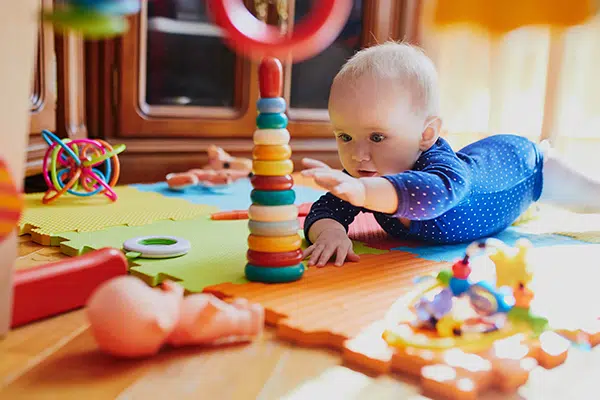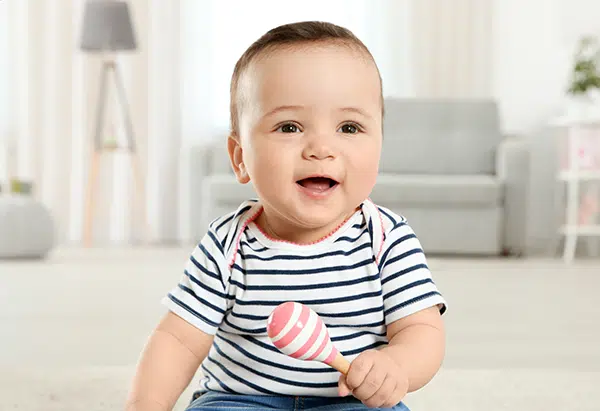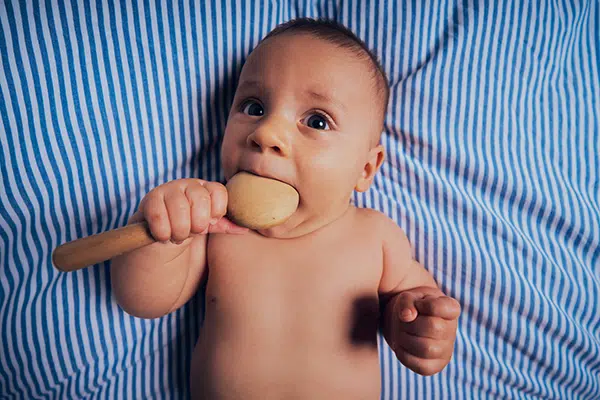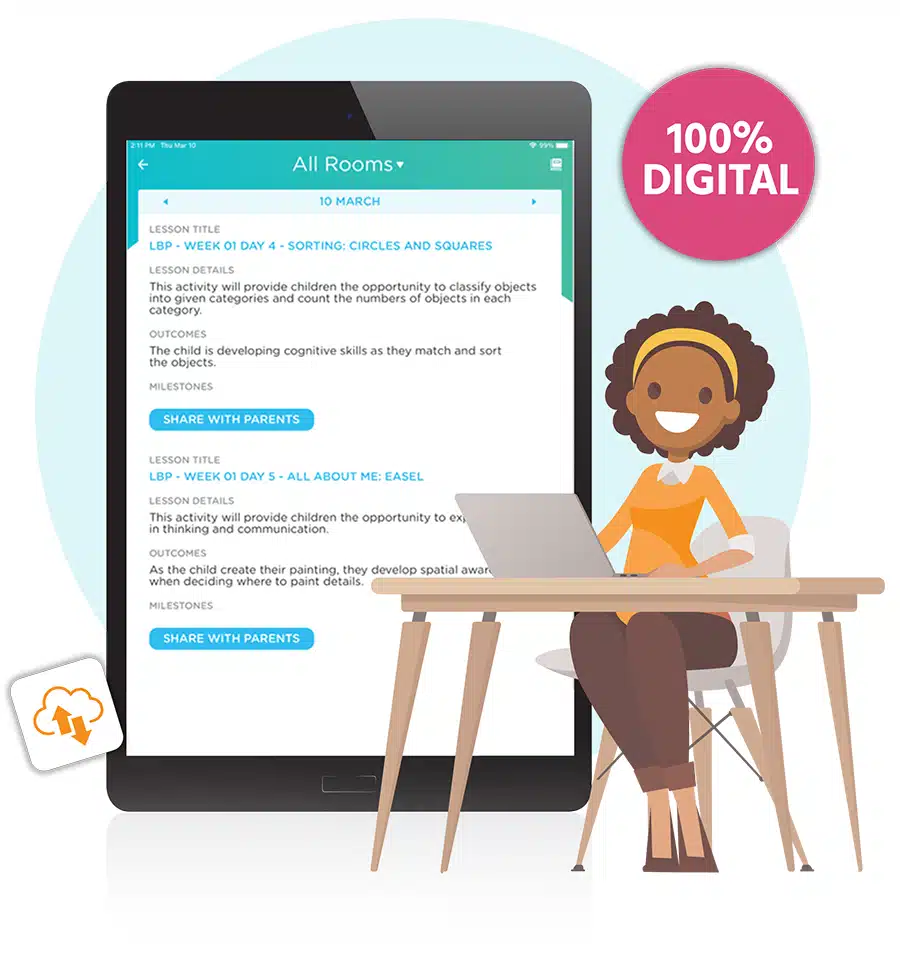
Unoccupied play, often referred to as independent play, is a form of free, undirected play in which children engage with objects and their environment in a self-directed manner.
Incorporating this type of play into the baby rooms of your child care center can help your littlest learners make developmentally appropriate strides.
Let’s take a deeper look at this type of play!
What is Unoccupied Play?
During unoccupied play, children explore and interact with toys, materials and surroundings without any specific goals or adult intervention.
This type of play encourages children to use their imagination, creativity and problem-solving skills, fostering their holistic development.
This type of play builds the foundation for the other five stages of play.
Unoccupied play looks like babies or young children exploring materials around them without any sort of organization. This stage allows children to practice manipulating materials, mastering their self-control and learning about how the world works.
What is the Appropriate Age Range for Unoccupied Play?
The appropriate age range for unoccupied play typically starts from infancy, around 3 to 6 months of age, and continues throughout early childhood.
During the first few months, unoccupied play involves sensory exploration. As children grow older, it evolves to include more complex activities, imaginative play, and exploration of their surroundings.
What are the Benefits of Unoccupied Play?

The benefits of unoccupied play for babies are multifaceted. It stimulates cognitive development by allowing infants to explore their surroundings, encouraging curiosity and problem-solving skills.
It also promotes sensory development, helping babies make sense of the world through tactile, auditory and visual experiences. And unoccupied play fosters emotional development by encouraging self-soothing and building a sense of independence and self-confidence.
How to Encourage Unoccupied Play in Your Daycare
Encouraging unoccupied play for babies in child care can be achieved through several strategies. Providing a safe and stimulating environment with age-appropriate toys, soft mats and sensory materials is essential.
Creating designated play areas that are free from distractions and noise can help babies focus on their exploration. And allowing babies to engage in activities at their own pace without constant adult intervention fosters a sense of autonomy and self-reliance.
Examples of Unoccupied Play for Babies in Child Care

Here are some ideas to get you started:
- Sensory exploration with soft textured toys or fabric squares
- Tummy time with colorful playmats and age-appropriate soft toys for reaching and grasping
- Playing with lightweight rattles and shakers to encourage hand-eye coordination and auditory stimulation
- Exploring safe, non-toxic household objects such as wooden spoons or plastic containers to promote imaginative play and sensory exploration
- Use sensory activities to foster their curiosity
How an Early Childhood Curriculum Can Help!

Unoccupied play is a vital component of a baby’s development, offering numerous cognitive, sensory and emotional benefits. By providing a nurturing environment and age-appropriate materials, caregivers can create opportunities for babies to engage in unoccupied play that set the stage for healthy growth and development in their early years.
Procare Early Learning powered by Learning Beyond Paper is an all-digital early childhood curriculum specifically designed to meet the unique needs of educating children from infancy through pre-kindergarten.
The curriculum is embedded into Procare, making it easier and less time-consuming for busy teachers and administrators to provide high-quality education.
With Procare Early Learning powered by Learning Beyond Paper, child care centers can:
- Equip teachers with state-of-the-art online curriculum at their fingertips
- Dramatically reduce the amount of time spent on lesson planning each week
- Offer children a high-quality, developmentally appropriate curriculum
- Save money with this cost-efficient solution that’s integrated with Procare
This curriculum can be used in ALL child care center classrooms, with 52 weeks of lesson plans and more than 4,000 daily activities for infants, toddlers, preschoolers and pre-kindergarteners. Learning areas include STEAM, language and literacy, physical development, cognitive, music and movement as well as interactive reading. Plus, teachers get tips and tools they can use in real time!
Procare is the only solution that can deliver the entire early childhood education ecosystem — lesson planning, lesson delivery within the classroom as well as assessment and parent engagement. Being able to do all of these with one platform simplifies classroom management and planning!
How much time and money could your child care center save using a digital curriculum designed for young learners? Enter your number of staff, number of students and type of program into our online calculator to learn your potential savings!



